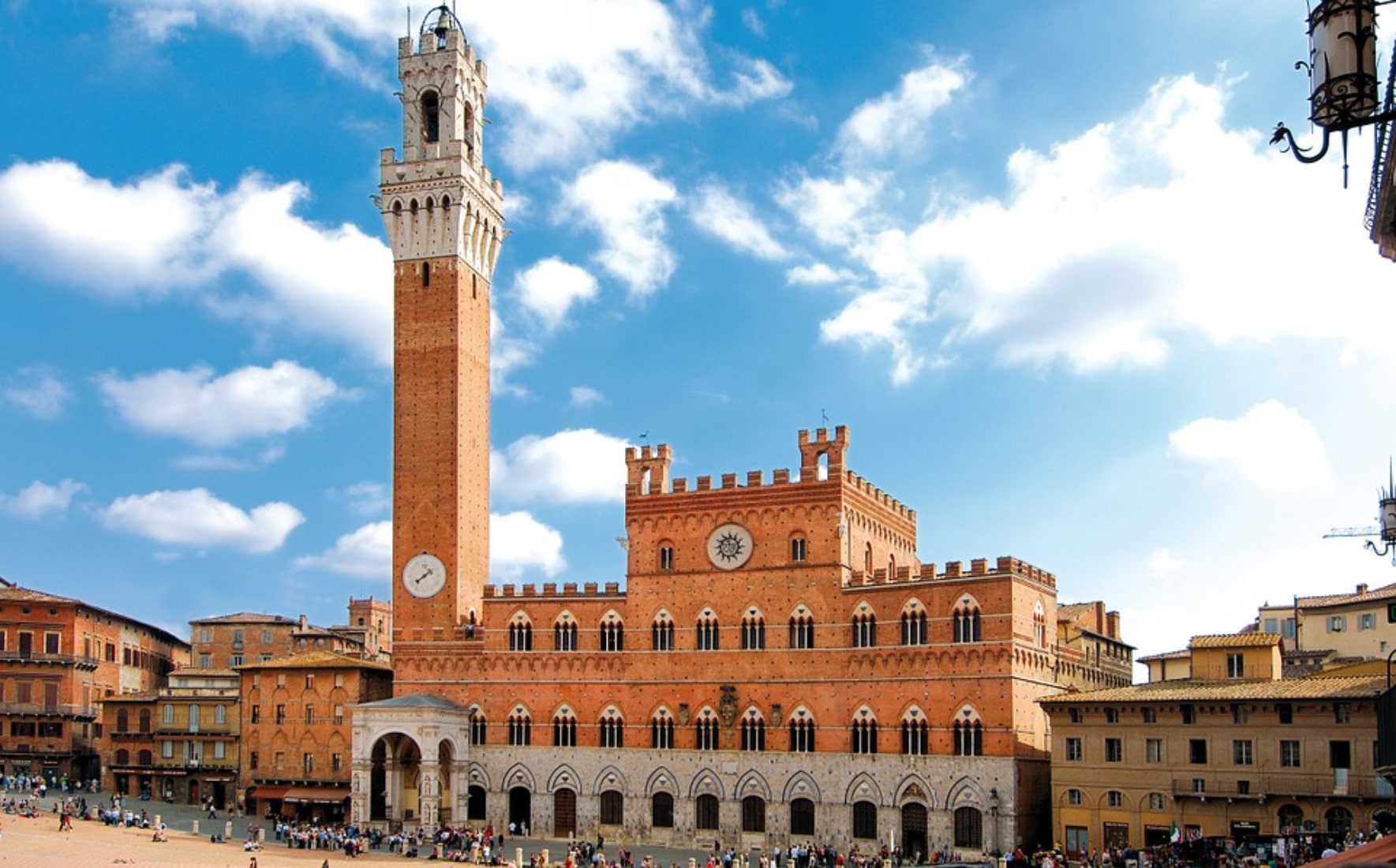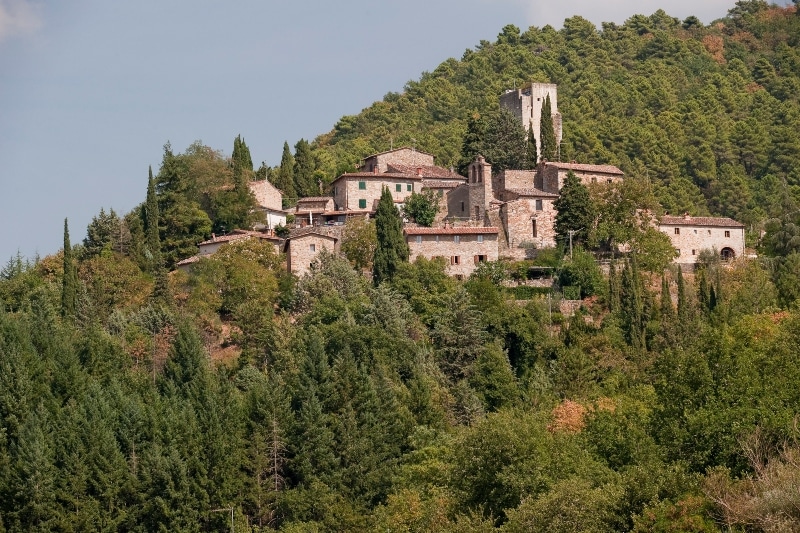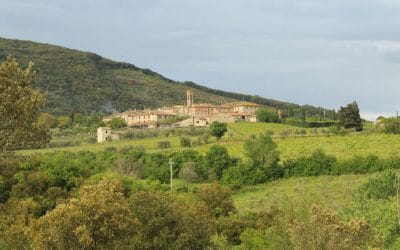The constitution of the city
Between myth and truth
The best known myth about the origins of Siena dates back to Roman times when, according to legend, the young Senio, son of Remo, together with his brother Ascanio, settled here and founded a castle to escape the persecution of his uncle Romolo, who had already killed their father. The two brothers brought with them the effigy of the Capitoline she-wolf, which would become one of the symbols of the city.
Actually the historical origin of Siena remains shrouded in darkness; perhaps in ancient times a place of Etruscan presence and then of a Roman military colony, named Sena Julia, there is no certain information about the events of the settlement both in late antiquity and in the early Middle Ages.
It was in the Lombard age that the city began to take shape, coinciding with the opening of the Via Francigena, which became, with the decline of the ancient Roman road networks, the safest and most used connection between the transalpine world and Rome. Siena is therefore, around the tenth century, at the center of international communications, and after this began to be brought together within a circle of walls the small villages that were formed first on the hill of Castelvecchio (the current Terzo di città) and then along the Francigena, of which the most important were today's Camollia and San Martino. This original tripartition of the city will be preserved over time, creating its characteristic urban conformation in the shape of an inverted "Y", around which the three districts, still called Terzi today.
The territorial and economic growth of Siena, bishopric since the Longobard era, continued throughout the 12th century, during which the city was endowed with municipal consular arrangements and began its policy of territorial expansion, which led it to tighten its loops and subjugate various castles dominated by small rural aristocracies and to enter into conflict, for the territories to the north, with the City of Florence, which would become its historical enemy for the following centuries. The city on the threshold of the 12th century probably appears as a set of tower-houses isolated from each other, enclosed within a mighty wall, as shown by an ancient seal preserved in the Sienese state archives. However, the great economic, political and urbanistic season began in the following century, when the ascending parable of the city's development reached its peak and produced the greatest artistic and architectural manifestations, giving the city some of its distinctive features.
The trade in grains from the Maremma, the production of woolen cloth and mainly the currency exchange activity were then the main sources of wealth in the city.
The progressive differentiation of groups and social status resulting from this economic development, however, leads to the emergence of increasingly bitter internal struggles. This conflict lasted throughout the whole century of 1277 with the proclamation of the statutes of the people which basically sanctioned the ousting of the members of the ancient families from the positions of power and the affirmation of an oligarchy of a financial and popular nature. In the general conflict between Church and Empire, Siena decidedly took up the Ghibelline cause, bringing a historic victory against the Guelph enemy Florence at Montaperti. In 1260, however, the fate of this conflict soon turned out to be mixed, given the heavy defeat of the Ghibelline ranks just nine years later in the battle of Colle Val d'Elsa. The Ghibelline defeat of Colle also provoked more and more heated internal struggles that led to significant political upheavals until the fall of the magistracy of the 24 and the rise to power in 1287 of the Governo dei Nove, the result of an agreement between the main Guelph families and destined to remain in office until 1355.
Under the Novecento regime Siena reached the level of maximum splendor both economically and culturally, and the cultured city was radically transformed. The Black Plague in 1348 that decimated the population, and new struggles between the factions that over time became systems of solidarity and temporary agreements between families and no longer expressions of different social statuses, marked the beginning of the decline of the city. This decadence took shape throughout the following century, despite the emergence in this period of high personalities, such as Catherine Benincasa, the saint who succeeded in bringing back the papal seat in Avignon to Rome, and Enea Silvio Piccolomini, who became Pope in 1457 under the name Pio II, who succeeded in obtaining the city's archiepiscopal dignity. The constant political instability also led to the conquest of lordly power by Pandolfo Petrucci, known as il Magnifico, who ruled the city from 1487 to 1525, but whom his family was unable to maintain; the slow decline of the Sienese Republic found its epilogue in 1555, the year in which the city, after a long siege, had to surrender to Florentine supremacy, while a group of diehard Republicans took refuge in the Fortress of Montalcino, where they even minted coins. The passage under Medici rule resulted in the creation of a new Sienese State, which maintained its administrative systems and borders, except for the ports on the Argentario which came under Spanish rule, but which definitively lost its independence, maintaining this structure until the time of the Lorraine reforms in the 18th century.
Discover Chianti with its castles...
Barbischio
Barbischio More than an ancient Florentine defenseThe Castle of Barbischio dominates the village of Gaiole In Chianti. In 1200, together with the nearby Montegrossi, Vertine and Meleto, Barbischio was part of the Florentine defences of this area of Chianti, bordering...
San Gusmé
San Gusmé The classic landscape of Chianti Senese between vineyards, castles and farmsSan Gusmé is a small fortified village a few kilometres from Castelnuovo Berardenga. From the top of its hill dominates the valley below where on the horizon you can easily recognize...
Villa a Sesta
Villa a Sesta A village of ancient origins and a thousand suggestionsIn the heart of the Chianti countryside, in a landscape where art, history and nature coexist, you come across a country of ancient origins and a thousand suggestions. Villa a Sesta is the typical...




